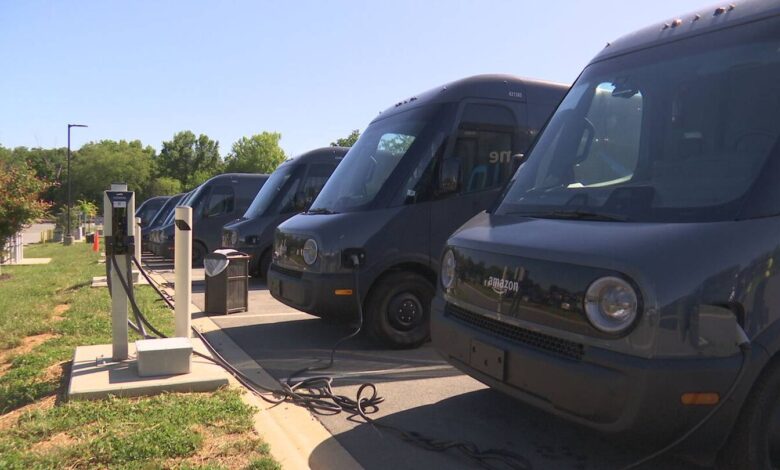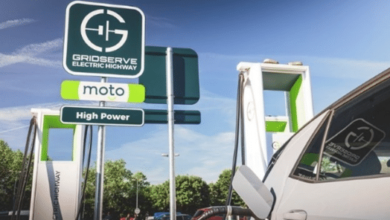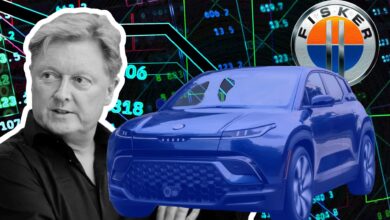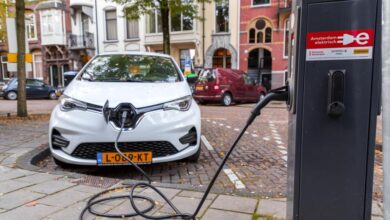Fleets play big role in EV adoption – WSOC TV

CHARLOTTE — For an increasing number of drivers, the first time they might try an electric vehicle could be at work.
Transportation typically accounts for the largest portion of carbon emissions a company or organization produces. For any group with strict sustainability goals, transitioning to EVs is one of the fastest ways to cut back.
[ CHECK IT OUT: Electric buses make debut at CMS this fall ]
How well that transition works depends on what those fleet vehicles need to do.
Concord’s Amazon distribution center was the first in North Carolina to introduce electric delivery vans into their fleet. Since then, driver Gabriella Rodriguez said it’s been a smooth transition, saving drivers time and making trips more efficient.
“As soon as you enter the vehicle you will see that the vehicle is on so it’s on automatically,” she said. “As soon as you put it on drive, the door will automatically close as soon as you put it on park it will automatically open.”
The Rivian vans have a range of around 150 miles, perfect for the routes within a 75-mile delivery radius. The vans charge overnight, and Rodriguez said so far, there’s been no issue with range anxiety.
For Mecklenburg County, sustainability and resiliency manager Erin Stanforth said the transition was a little more difficult.
“Initially we thought that you could just hop in and use them and that just wasn’t the case,” she said.
Stanforth said charging infrastructure had to come first, not just at the county buildings where the vehicles would charge overnight, but also throughout the county as employees would occasionally need to charge on the road.
“Not often, but it does happen,” she said. “We have to be sure that the infrastructure is installed on within our own portfolio.”
Currently, Stanforth said Mecklenburg County has 120 EVs in its fleet and plans to add more as older vehicles phase out. Amazon has 400 across North Carolina and similar plans to phase in more. Neither is on track to go all-electric for all its transportation needs, however.
Like most companies that depend on freight deliveries, Amazon partners with diesel-powered truck drivers. For their hauling needs as well, Stanforth said Mecklenburg County relies on gas trucks.
“Like garbage trucks, large scale trucks that like haul things,” she said.
Currently, electric or zero-emissions options for these types of transportation barely exist and those that do are expensive.
Dr. Robert Cox with UNC Charlotte’s Energy, Production and Infrastructure Center says it comes down to the strengths and weaknesses of battery technology.
“The more weight that you have to carry, the more energy you just need in general, so a heavier car is going to need a bigger battery,” he said.
Then the bigger battery increases the vehicle’s weight and again, there’s either a tradeoff of range or size.
“It’s fundamentally battery chemistry,” he said.
Unless technology or logistics takes a massive step forward in the coming years, Cox expects zero or low-emission long-haul trucking may not see a breakthrough from batteries at all.
“Maybe a hydrogen fuel cell type of vehicle,” he said. “I think that type of thing is probably more likely for the future.”
Cox does believe EVs have their place, adding that he drives a Chevy Volt.
“Driving around on city streets in an electric vehicle is incredibly energy efficient,” he said.
He also believes fleets are a perfect starting point for EVs. There’s often a limited range, charging infrastructure can be ready in the same place every day and it gets more drivers used to the technology.
“I think what it’s going to take is those first adopters, to use the technology, for people to see the technology being used by those folks and then that kind of driving the adoption by others,” he said.
(WATCH: Electric vehicle sales decrease in 2024)
This browser does not support the video element.



